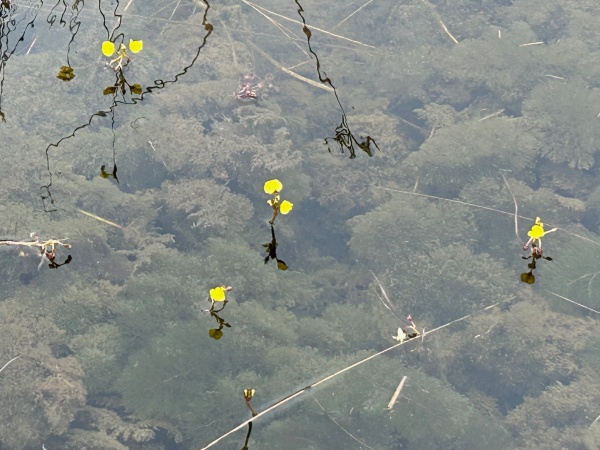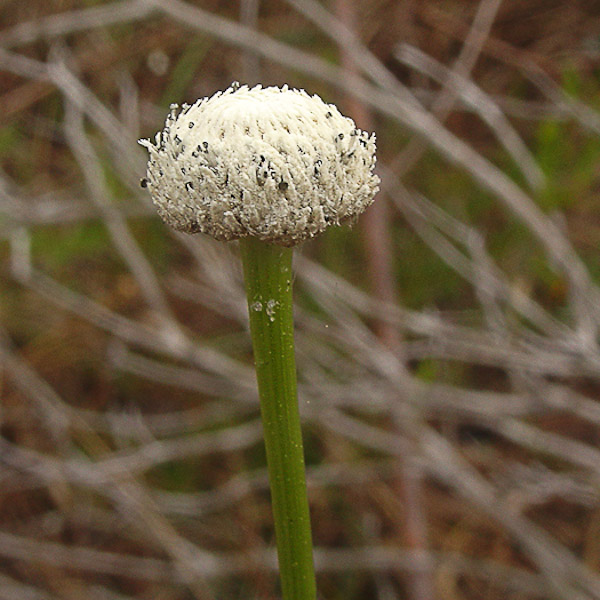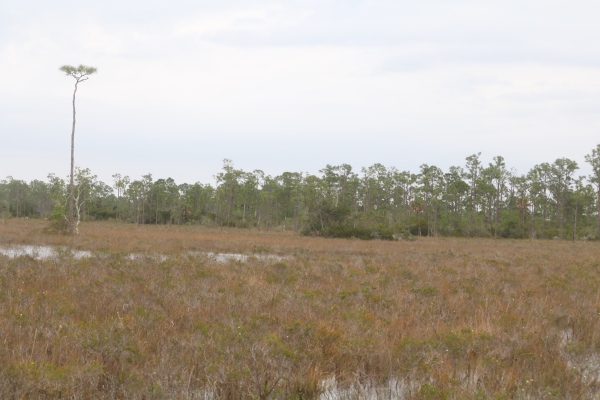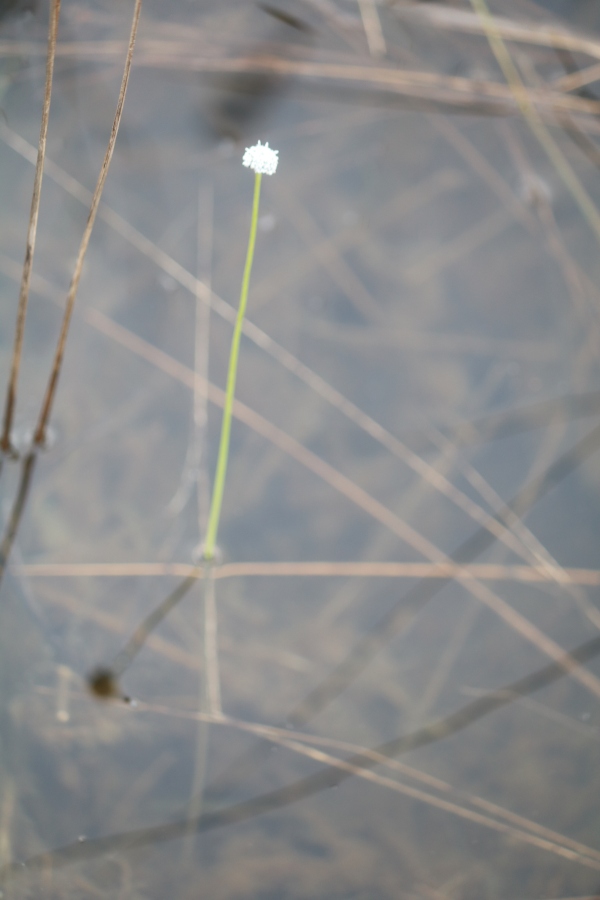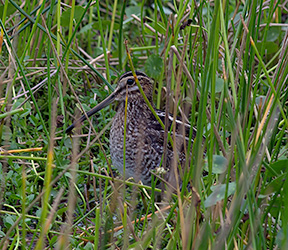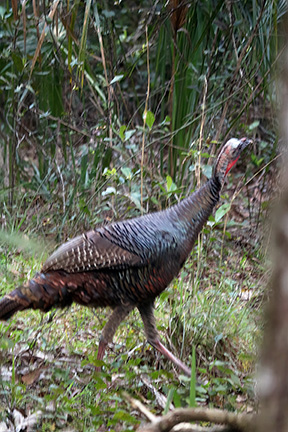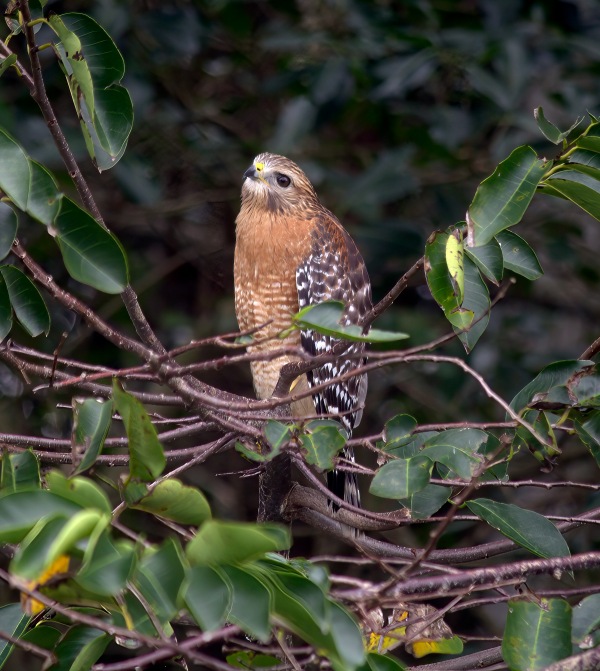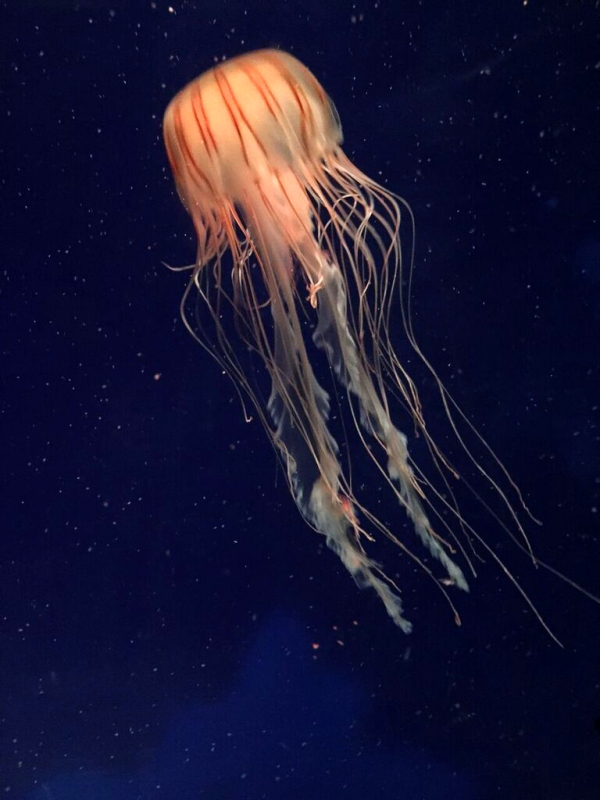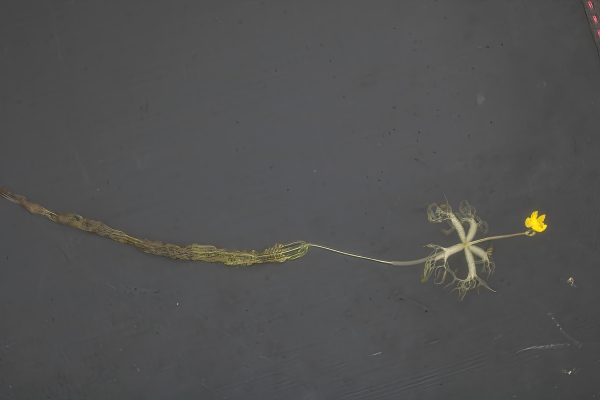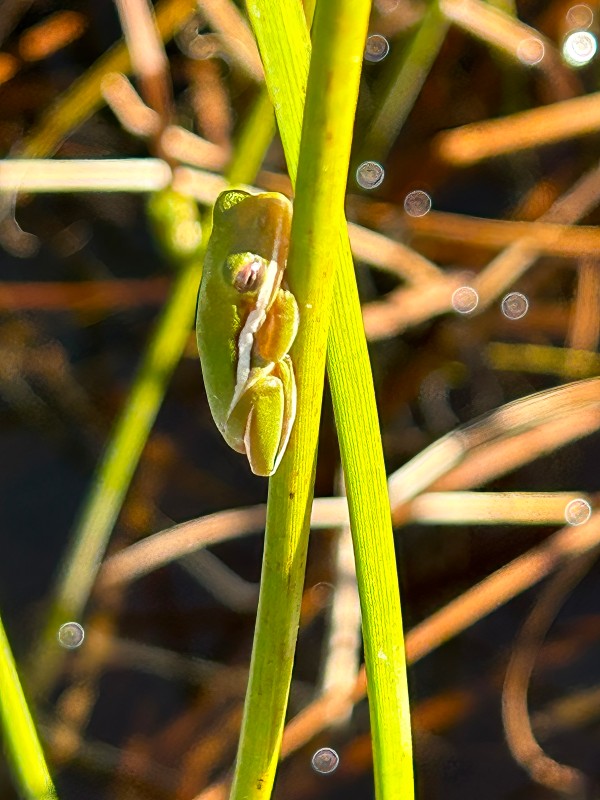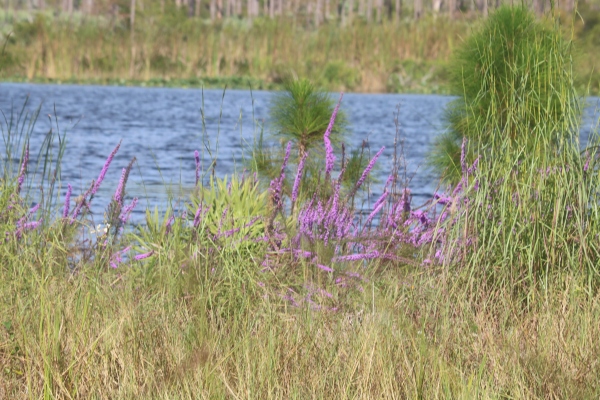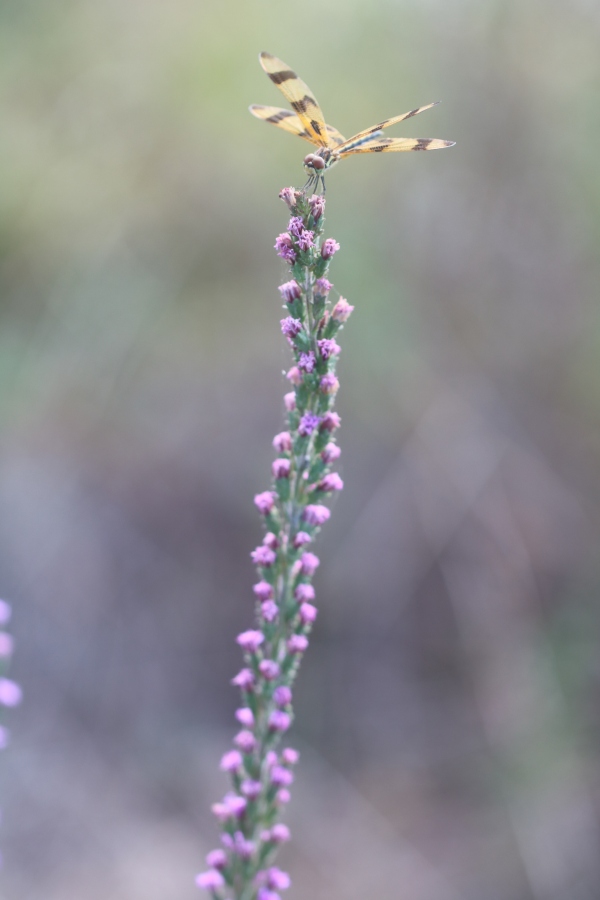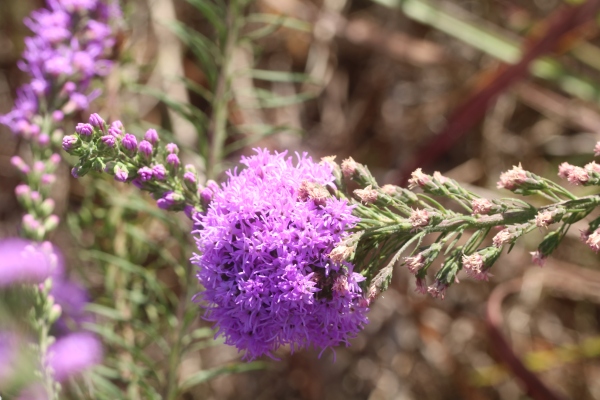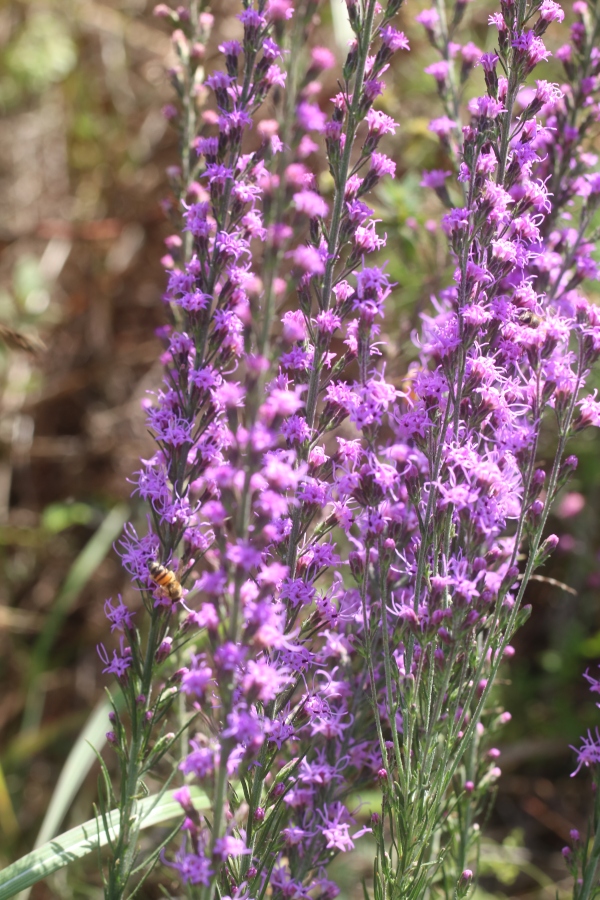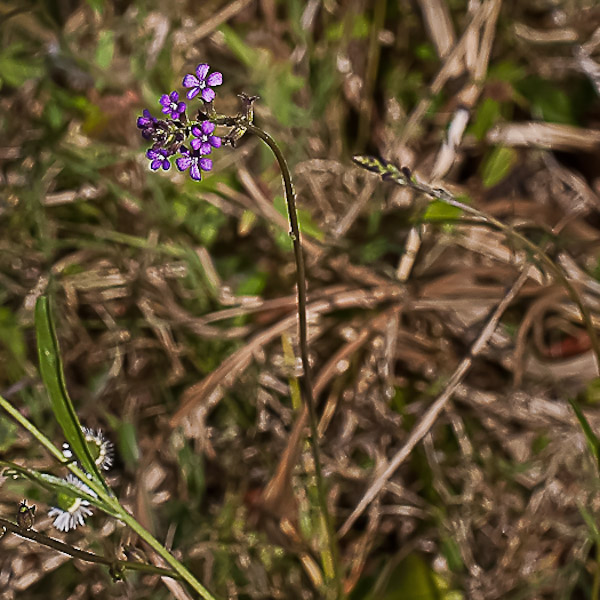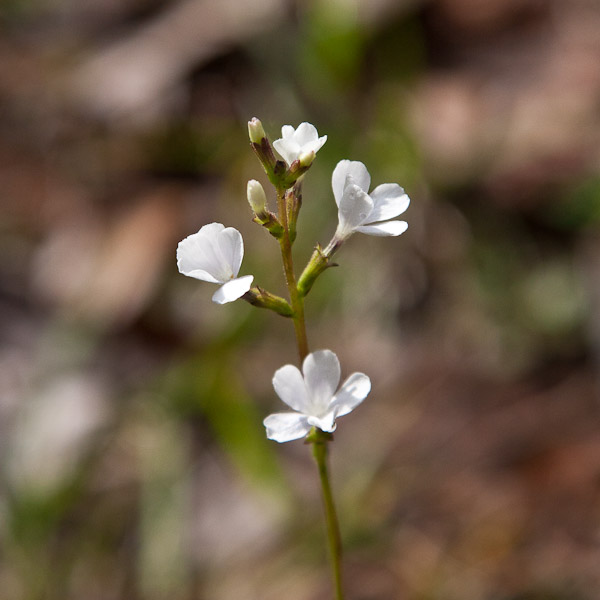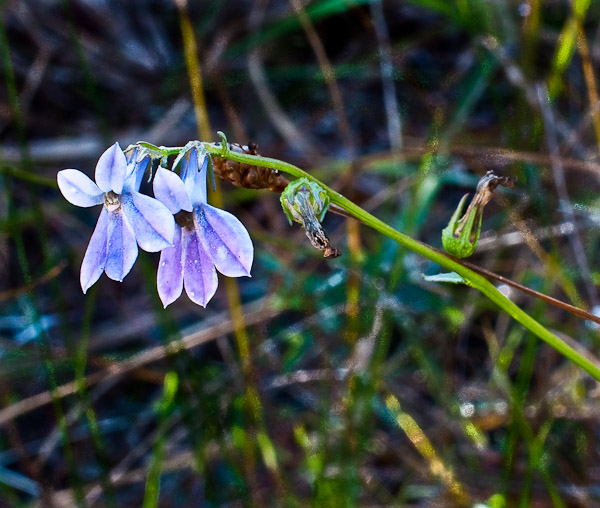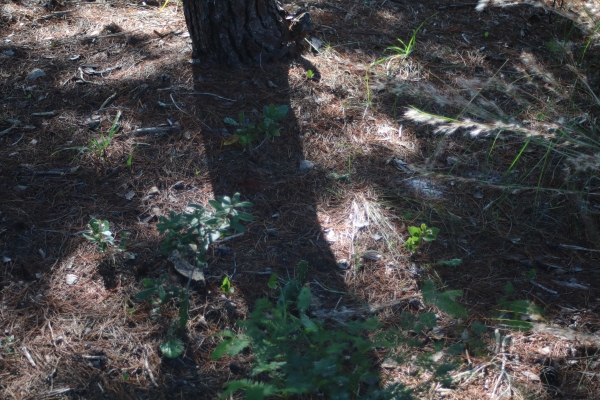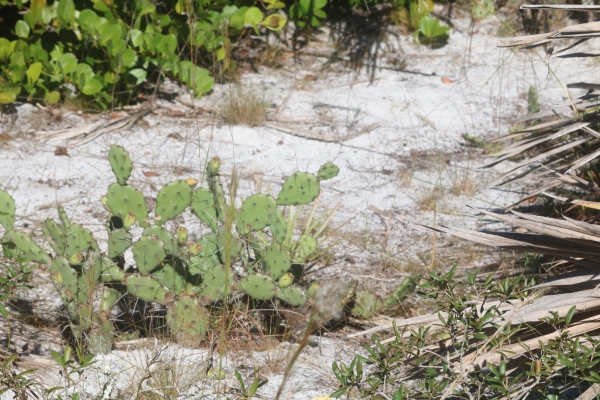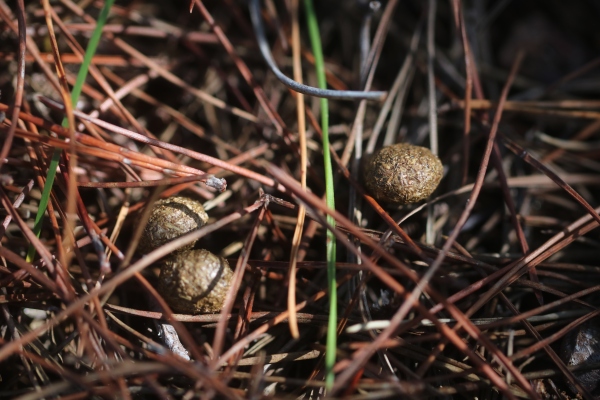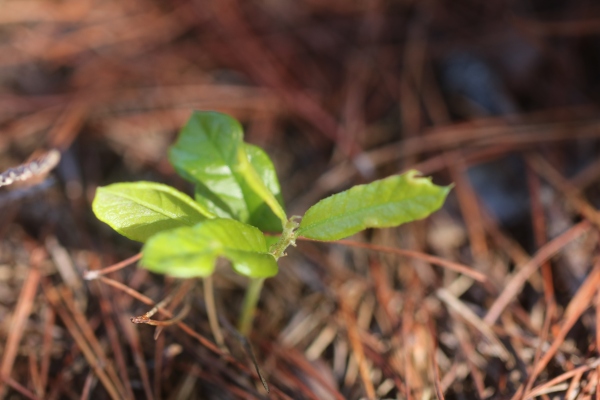Centella asiatica
Apiaceae (Carrot Family)
In the great big plant world, 250,000 flowering species, only a handful are known to be pollinated by ants. Let’s guess: ten species, probably too high. That’s 0.00004 percent. Do we have one of them here in PB County? Maybe, maybe not.
Centella asiatica, sometimes called Pennywort, and sometimes called Gatu Kola, is an odd little wonder. [Oops, that should be Gotu, see reader comment below.] It grows all around the tropical world, including around here in wet marshy places, although it tolerates seasonal drying. It is one of those bioactive plants with a million historical and current medicinal and cosmetic uses, in many cultures. (Careful, there are toxins.) I’ve never been much interested in “medicinal plants,” so if that’s your interest, there are 100 websites with info on this species.
How has a small creeping plant crept all over the hot-climate world? Part of the answer is fragments. If you take marsh soil and put it in a container nice and wet, up pop lots of baby Centellas. A whole lot of them. I don’t think that is from “seeds,” but rather rhizome pieces. The reasons I don’t like “seeds” is that the flowers and fruits are rare. I have the species growing at my home, and the babies are coming from tiny unplanted plant pieces. That ability alone is mysterious. How can the mud be full of ANYTHING that spawns baby Centellas every few inches? Maybe it is magic.
To dig in deeper, the floral biology has been studied a little. Biologist Asma Javaid and collaborators looked into it: in pots, in a garden, in Jammu, India. (How does that relate to a Florida marsh?) They found the plant to be largely self-pollinated. That I believe. They also concluded ants are the insect pollinators to the limited extent there are insect pollinators. But that sets off alarms:
1. See above. Ants pollination is EXTREMELY rare.
2. The results were based on potted plants in a garden.
3. Did the ants merely get on the flowers uselessly or worse, or did they actually pollinate? In the Jammu study, flowers covered with bags produced more seeds than those open to pollination. Maybe the ants visited the flowers in a bad way, stealing pollen or otherwise deleterious, and the bags protected the flowers from the ants?
The flowers are minute, not even ¼ inch in diameter, held near ground level under foliage, maybe an inch in the air, when you can find them which is not easy. Find the flower in the photo below. (They are dead-center.)
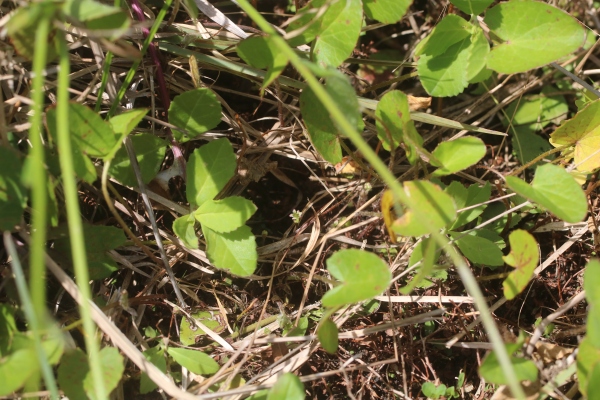
Find the flower
But being low does not necessarily = ants. There are little flying insects, not to mention that pervasive self-pollination. Today I sat on the soil in the Pine Glades Natural Area all soggy-assed for 24 minutes watching the Centella flowers to see if anything visited. Naw! But who knows what 24 hours watching might discover. Wherever and whenever the species originated (tropical Asia?), I’m sure Florida is distant in time and space from the original pollination context.
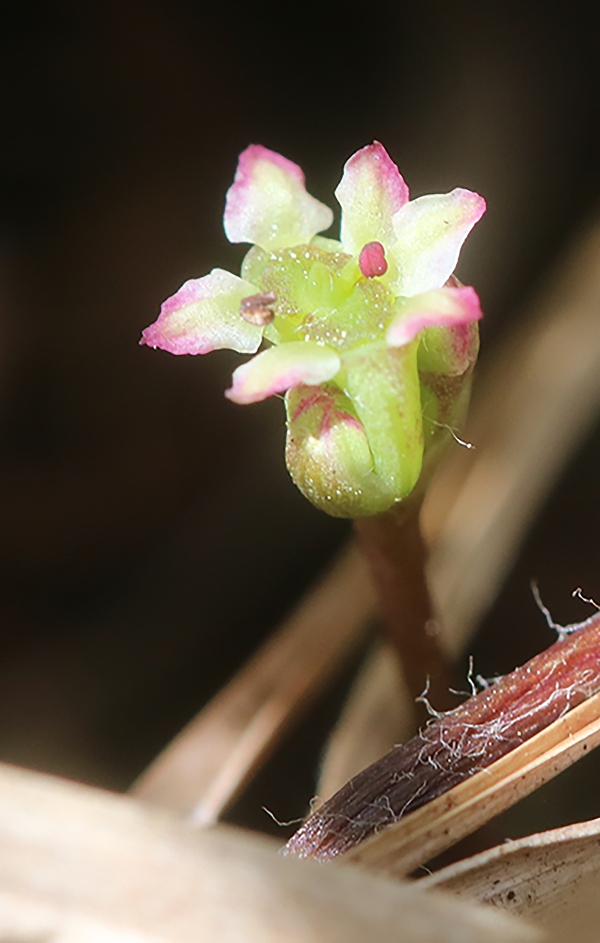
So all in all, nobody knows the Florida Centella story. Self-pollination is surely substantial. So is super-sprouting from fragments, no doubt.
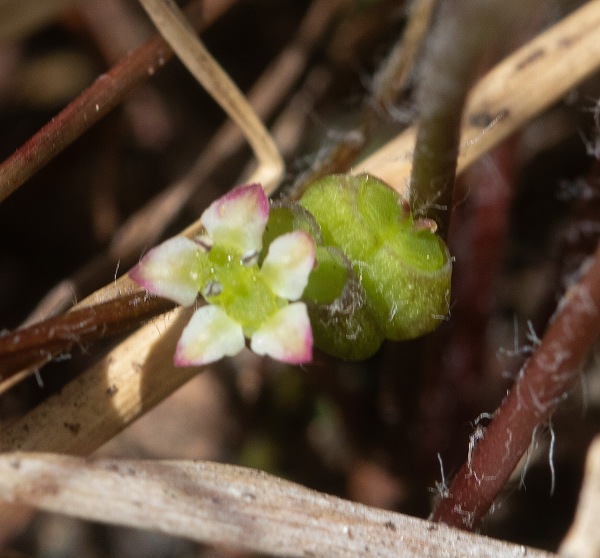
I suspect that marsh animals, such as marsh ricerats, help spread the fragments as they scurry around the marsh on their criss-crossing trails, which can channel flowing water able to relocate plant bits over long distances. And that’s where it stands with Gatu Kola. Does anything visit those tiny hidden lilac flowers here? I’ll place a wager…not ants.
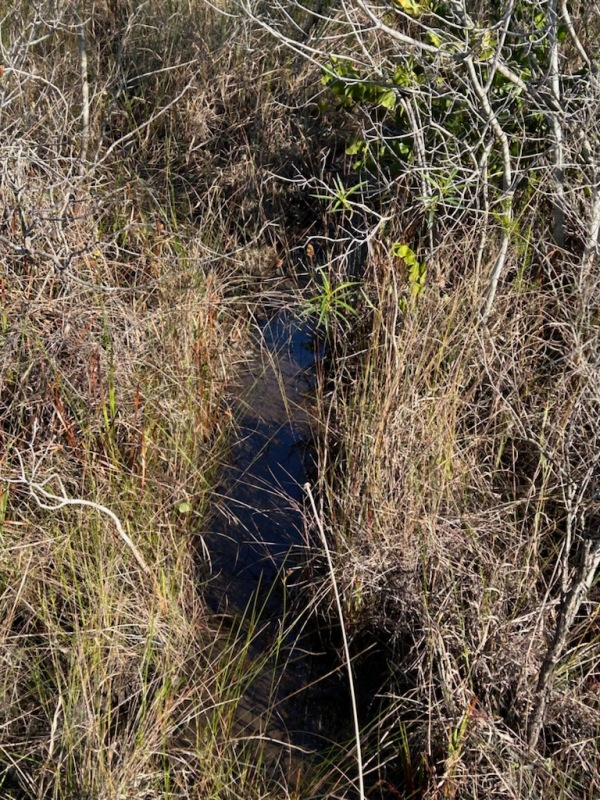
Animal (ricerat?) trail in Centella habitat marsh
